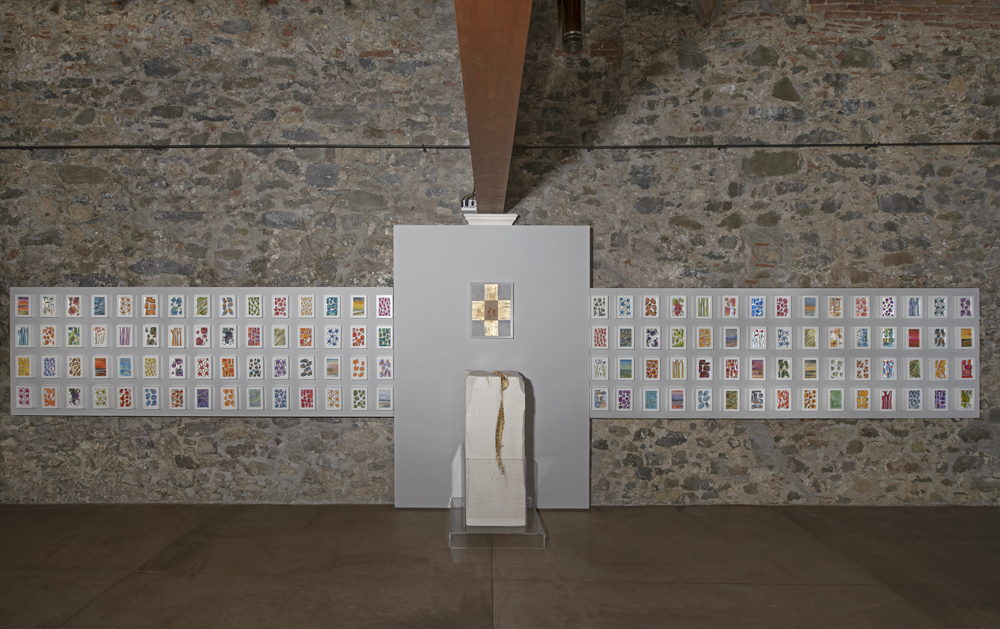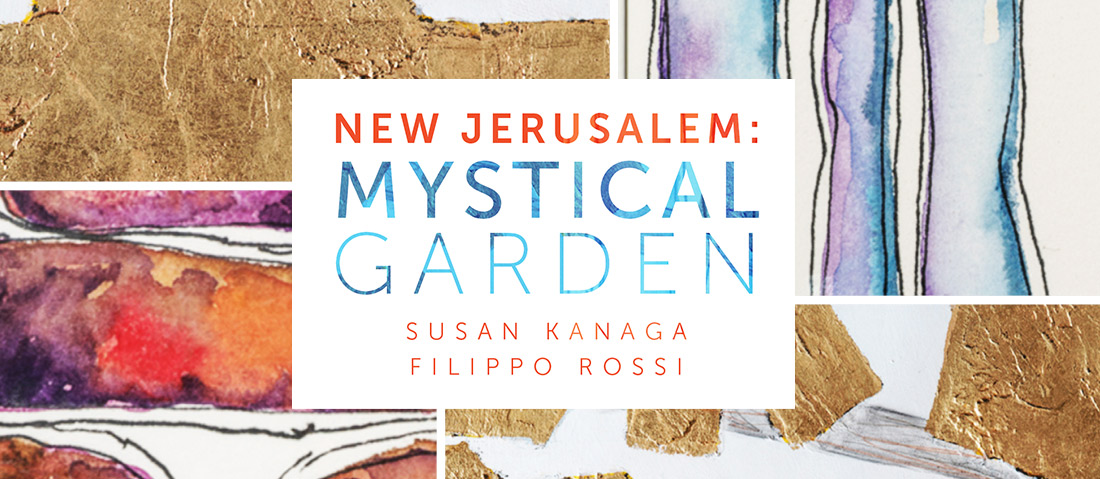
The idea of Jerusalem, as explained in the Scriptures, has an inescapably visual dimension. “What we had heard we saw for ourselves in the city of our God, in the city of Yahweh Sabaoth”, the Old Testament affirms (Psalm 48 [47]:8).
It is thus appropriate to present the exhibition New Jerusalem, born in the context of the international conference Florence and the Idea of Jerusalem, in two churches and in a monastic setting: in the thousand-year old basilica of San Miniato al Monte; in Orsanmichele, a jewel of the Florentine Trecento; and here at the Mount Tabor Ecumenical Centre for Art and Spirituality in Barga,Italy.
Articulated in three sections, the exhibition explores interrelated aspects of the New Jerusalem theme: at San Miniato, The Temple on the Mount; at Orsanmichele The Holy City; at Barga, The Mystical Garden
The Mystical Garden, is mounted in the lemon-house of Villa Via Sacra. This monastic garden on the walls of a city, Barga, which, like Florence, is dominated by a church on an ‘acropolis’ – the medieval Duomo of St. Christopher –, synthesizes the meaning of the entire exhibition. Filippo Rossi’s great tree, and Susan Kanaga’s profusion of flowers, evoke other biblical gardens as well: in primis that “in Eden, which is in the east”—the garden of the tree of life but also of the tree of the knowledge of good and evil (Gn 2:8-9), in which man and woman sinned for the first time. The exhibition also evokes the love garden of the Song of Songs, where the Bride, tells the Bridegroom: “I am the rose of Sharon, the lily of the valleys” and then describes him as “an apple tree among the trees of the wood” whose “fruit is sweet to my taste” (SS 1:16-2,3). In the book of Revelation the Bride is the community of believers, the Bridegroom Christ, and an immense throng, with a voice like the sound of the ocean, cries out that “This is the time for the marriage of the Lamb. His bride is ready (Rev 19:6-7). The apostle John sees “the new Jerusalem coming down out of heaven from God, prepared as a bride dressed for her husband (Rev 21, 2
The garden is thus the mystical heart of the holy city, the place in which interpersonal relationships, wounded by sin, are healed, and the hatred that shaped Babylon, the “haunt of devils” (Rev 18: 2), yields before the love of the Lamb who is the temple and the light of a new city, the heavenly Jerusalem.
Working in the abstract style which distinguishes them, and which has powerful symbolic impact, Susan Kanaga and Filippo Rossi exalt in particular gold and color, taking inspiration from the description of the heavenly Jerusalem in the book of Revelation, according to which “the wall was built of diamond, and the city of pure gold, like clear glass”, and “the foundations of the city wall were faced with all kinds of precious stone”: diamond, lapis lazuli, turquoise, crystal, agate, ruby, quartz, malachite, topaz, emerald, sapphire and amethyst (Rev 21: 18-20). This detail – city walls encrusted with precious stones – is in fact typical of early Christian mosaics, and survives ideally in medieval mural paintings in churches and stained glass windows that open walls to the light representing Christ, Lux mundi. With fine biblical sensitivity, that is, these 21st-century artists reactivate the symbolic aesthetic of the great Christian tradition, inviting viewers to rediscover the potential of matter to transmit a spiritual message.

